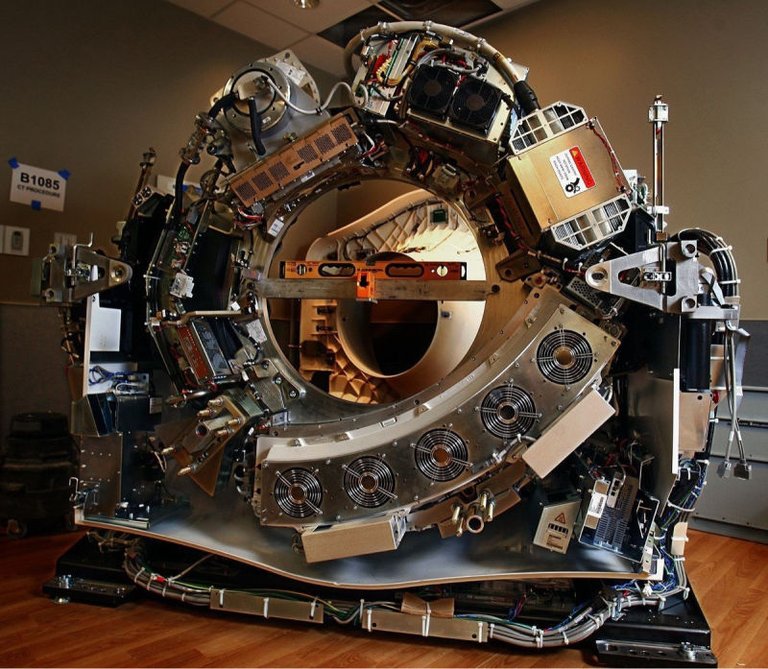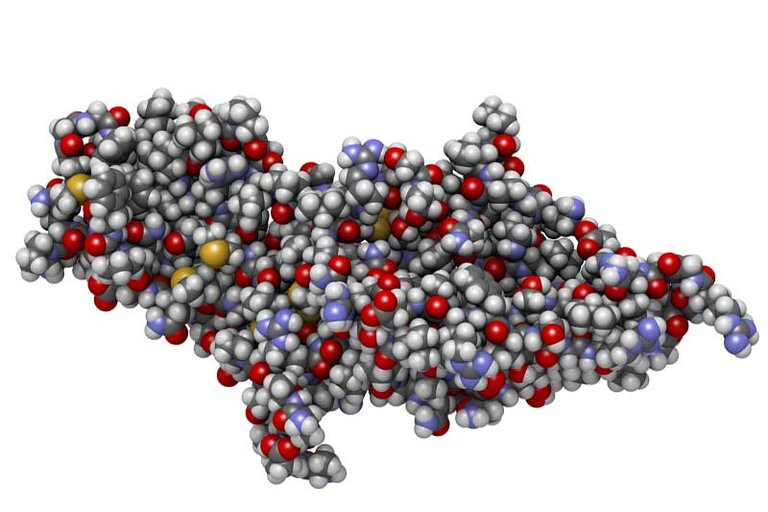When I started writing this story on Steemit I saw it as a way to share my experience with others as well as sort through the thoughts in my own head. These last few weeks have been spent recovering from surgery and anxiously waiting for my next round of tests to see where I stand. I used that time to document everything I have gone through in the last year. Yesterday I met with my doctor and I finally have some good news to share. No tumor growth showed up on my scans! For now, at least, I am in the clear.
Taking the tests
Because I was a good student, my friends always joke that I should have no problem "passing" these tests for cancer. Unfortunately, there is no way to study for a CT scan. Yesterday was a whirlwind day of testing for me. I received CT scans, basic chest X-rays and a blood tests.
CT scans
The main tool used in evaluating my tumors is the CT scan:
A computerized tomography (CT) scan combines a series of X-ray images taken from different angles and uses computer processing to create cross-sectional images, or slices, of the bones, blood vessels and soft tissues inside your body. CT scan images provide more detailed information than plain X-rays do [1].
In my case, two images are taken. The first is just a regular scan of my abdomen, chest and neck. For the second image, a special dye is injected into my blood through an IV. The iodine contrast material makes my tumors more obvious on the scans [2]. Having the contrast material injected into you is an unpleasant experience. I can taste it in my mouth and feel an uncomfortable itching all over my body. I make sure to drink a glass of water immediately after the CT scan to flush this dye out of my body as fast as possible and spare my liver and kidneys. Unlike an MRI, CT scans are quick - just a few seconds per scan.

A CT scanner with the cover removed. source
The main risk from CT scans is the large amount of radiation received. Radiation doses are measured in sieverts (Sv). The webcomic XKCD put together a great graphic on radiation doses. For each scan, I absorb about 7-10 mSv. That's a higher dose than I would receive from spending two hours at Chernobyl (6 mSv)! The EPA sets the one year dose limit for radiation workers at 50 mSv. This shows getting a few CT scans a year is a sizeable chunk of radiation and can lead to increased risks of future cancers such as leukemia. Ultimately, the usefulness of the images provided by CT scans are worth the risk over traditional X-rays.
The other common type of specialized imaging used for cancer are PET scans. Small amounts of radioactive material are injected into your body and tracked. Using this technique, doctors can tell what is going on at the molecular level in the body [3]. PET scans are used for a wide array of cancers, but not for testicular cancer.
Blood Tests
Over the last year I have had a lot of blood drawn to check my tumor markers. Tumor markers are specific proteins in the blood that become elevated due to the cancer. There are three tumor markers for testicular cancer: alpha-fetoprotein (AFP), human chorionic gonadotropin (HCG), and lactate dehydrogenase (LDH) [4]. Oddly enough, AFP and HCG are elevated in pregnant women. Some men with testicular cancer will have levels high enough to get a positive reading on a home pregnancy test. LDH is expressed during tissue formation and damage. High levels of LDH will signify that something is wrong, but not necessarily that it is cancer. While checking tumor markers will not tell the complete story, the test is easy, cheap and low risk.

HCG molecule. source
The Results
After spending all morning taking these tests, I had an appointment in the afternoon to get the results. I appreciated the quick turnaround. I didn't have to sit and stew overnight waiting. By the time the nurse took my vitals and checked me in, I was a basket of nerves. Finding ways of dealing with uncertainty has been a theme in this series, and yesterday was a major turning point.
At last the doctor walks in and starts asking about how I have been doing. After answering his questions, I finally get the results I have been anticipating. He tells me my scans look good. I do my best to keep my composure, but internally I am jumping for joy. That was the first real good news in 9 months. I have to come back in two months for my next set of scans, but for now at least I am done with treatment. I'd like to briefly define a few words as they apply to cancer:
Remission: A decrease in or disappearance of signs and symptoms of cancer. In partial remission, some, but not all, signs and symptoms of cancer have disappeared. In complete remission, all signs and symptoms of cancer have disappeared, although cancer still may be in the body [5].
Recurrence: Cancer that has recurred (come back), usually after a period of time during which the cancer could not be detected. The cancer may come back to the same place as the original (primary) tumor or to another place in the body. Also called recurrent cancer [6].
Surveillance: Closely watching a patient's condition to find early signs that a disease has come back. Exams and tests are done on a regular schedule, but no active treatment is performed [7].
Five year survival rate: Doctors base cancer survival rates on how many people make it to five years after initial diagnosis. This is not the rate of people cured after five years, merely the number of people still alive. Patients who are still actively being treated for cancer are counted in this statistic. Fortunately for me, testicular cancer is a relatively quick growing cancer. This means that if it hasn't come back in two years, the odds are good I am completely cured [8].
Moving forward
Finding out that I will be moving from active treatment to surveillance is a big relief. For now at least, the physical suffering from treatment is over. The last surgery I had (see Part V) was rough and I'm still healing. I can now focus on recovering from my surgery and returning to more normal activities.
For me, I think the more difficult aspect will be mental. For the last year I have been completely focused on one thing - beating cancer. Now, I have to move on to new goals. I don't want to lose the perspective I have gained as I slip back in to my normal routine. More than ever, I realize life is precious. I have so much I want to do! I can't let old habits or insecurities get in the way.
I also have to find ways to deal with the fears of remission. In the back of my mind, I know that the cancer could come back at any time. I don't think this fear will go away any time soon. My goal is to use this awareness to motivate me. Some things are just out of my control and I just need to focus on what I can do instead.
Here's to a better 2017!
I'm glad I decided to join Steemit and share my story. I'll continue to post about cancer and my life as topics come up, but hopefully this chapter of my life is closed. For those interested in the beginning, I have included a link to Part I. Also get to know me. As always let me know what you think in the comments or send a message to [email protected].
Congratulations.., on the good news!
Thank you!
Glad to hear you are in remission. I know what you are going through. Keep your words close to your mind/heart - Some things are just out of my control and I just need to focus on what I can do instead.
It's a lonely journey or at least can feel that way. Thanks for sharing a personal story.
Following to keep in touch.
Thank you for the kind words countrygirl. Posting on here has been very helpful for me.
I looked at some of your photographs and really liked them - I followed you as well.